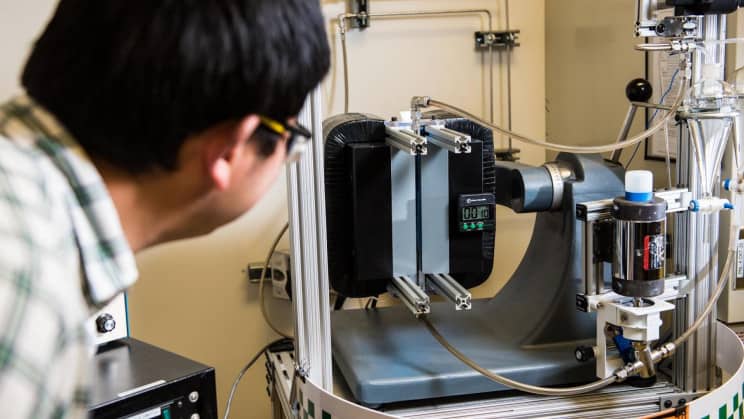“Any sufficiently advanced technology is indistinguishable from magic,” wrote iconic sci-fi author Arthur C. Clarke.
Scientists from the Department of Energy’s Pacific Northwest National Laboratory (PNNL) developed a technique that uses magnetic nanoparticles to invisibly extract minerals including lithium from water, and it’s not far off from magic, or even the alchemy of centuries past.
They are collaborating with industry leaders to test their method, which could be used to boost the cost-effectiveness of renewable energy solutions and also reduce the U.S.’s reliance on lithium imports.
Extracting lithium from water using nanoparticles
Lithium is essential in the production of batteries and other electronic equipment. Though the global market for the mineral is projected to soar to $8.2 billion by 2028, very little lithium is produced in the U.S., which has led to initiatives to find new methods for producing the vital material.
The new patent-pending method from PNNL is also a more affordable and faster way to procure the mineral, the organization explained. It is developing magnetic nanoparticles that are surrounded by an adsorbent shell that latch to lithium and other metals in water used for various industrial processes. During the process, lithium is drawn to the nanoparticles which are then drawn out in a matter of minutes using magnets. Once the lithium is extracted from the particles, they can be used again to extract more of the material.
Sources of the water used during the process include the geothermal brines used in geothermal power plants and water pulled from the subsurface during oil and gas production. One recent report suggested that only 11 existing geothermal plants along the Salton Sea could have the potential to produce more than 10 times the current U.S. demand for lithium metal.
PNNL scientists are looking at other minerals too
The PNNL’s new method is a promising alternative to traditional means of extraction that rely on expensive evaporating ponds. Those processes can take months as they rely on vast amounts of water evaporating in arid regions, leaving behind their minerals for collection.
The new process could also increase the cost-effectiveness of renewable energy solutions such as geothermal plants, which use water to capture heat deep below the Earth’s surface, as lithium collected during the process would help to offset operating costs.
The PNNL researchers say they are also customizing the shell of the nanoparticle to target other valuable minerals and elements used in energy technologies, medical imaging devices, electronics, and other applications.
Ancient alchemists once sought to convert lead into gold. While this new method doesn’t amount to alchemy or magic, it could vastly improve the cost-effectiveness of renewable energy solutions, helping the global community to overcome one of its greatest challenges. If it delivers on its promise, such an innovation truly will be indistinguishable from magic.

